Sink grates play a crucial role in protecting the delicate surface of your sink from scratches and damage while aiding in efficient water drainage. Over time, however, these grates can become a breeding ground for grime, food particles, and unsightly water spots. Without regular maintenance, not only does the appearance of the sink grate diminish, but it can also lead to unpleasant odors and potential scratches on the sink itself.
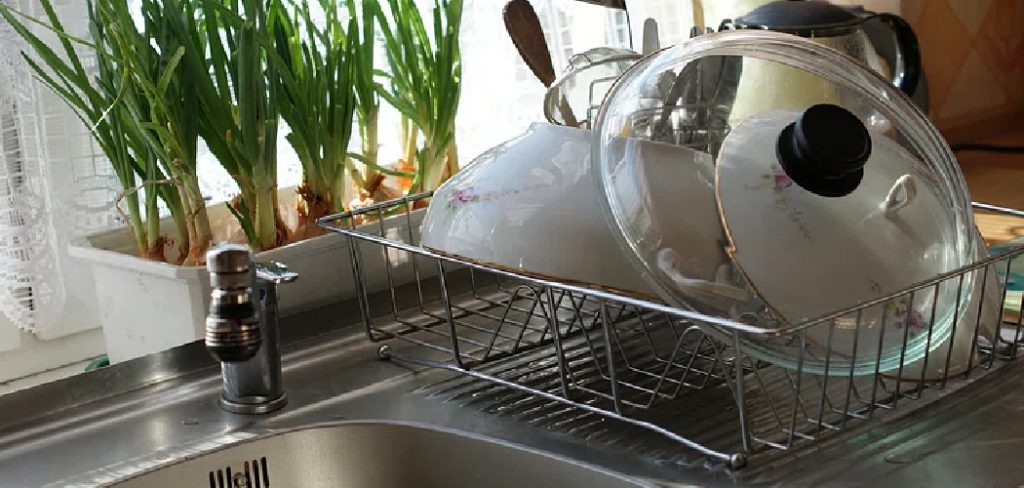
This article aims to equip you with the knowledge on how to clean sink grate effectively using simple, step-by-step techniques. By following the methods outlined, you can ensure your sink grate stays in top condition, maintaining its functionality and cleanliness and thereby prolonging its lifespan. Mastering how to clean sink grate not only enhances the hygiene and aesthetics of your kitchen but also safeguards your sink’s surface from unnecessary wear and tear.
Understanding Sink Grate Materials
Sink grates come in various materials, predominantly stainless steel, plastic, or coated metal, each with unique characteristics and cleaning needs. Stainless steel grates are popular due to their durability and sleek appearance, yet they tend to develop water spots if not properly dried. These grates can handle more vigorous cleaning; however, avoiding abrasive materials that might scratch the surface is important.
On the other hand, plastic and coated metal grates require a gentler touch to prevent scratches or damage to their protective coatings. When cleaning these materials, choosing soft cloths and mild cleaning solutions is essential to maintain their integrity. Common problems affecting sink grates, regardless of material, include discoloration, grime buildup, and rust, particularly on older or poorly maintained grates.
Identifying these issues early on is key to choosing the correct cleaning technique, ensuring longevity and optimal performance of your sink grate.
Pre-Cleaning Preparation
Removing the Grate from the Sink
When cleaning, it’s crucial to remove the sink grate with care to avoid any inadvertent damage. For stainless steel grates, gentle handling is key to preventing scratches that could mar both the grate and the underlying sink surface. Those made from plastic or coated metal require an even more delicate touch to avoid cracking or chipping the material.
Ensuring a secure, stable grip while lifting the grate will help navigate around any awkward angles or tight spaces that might otherwise lead to accidental contact with sink edges.
Rinsing Off Loose Debris
Once removed, hold the grate under a stream of warm water. This helps gently loosen and wash away the residue of crumbs, grease, or any fine particles clinging to the grate. This preliminary rinse not only discards excess debris but also makes identifying deeper stains more manageable for later targeted cleaning.
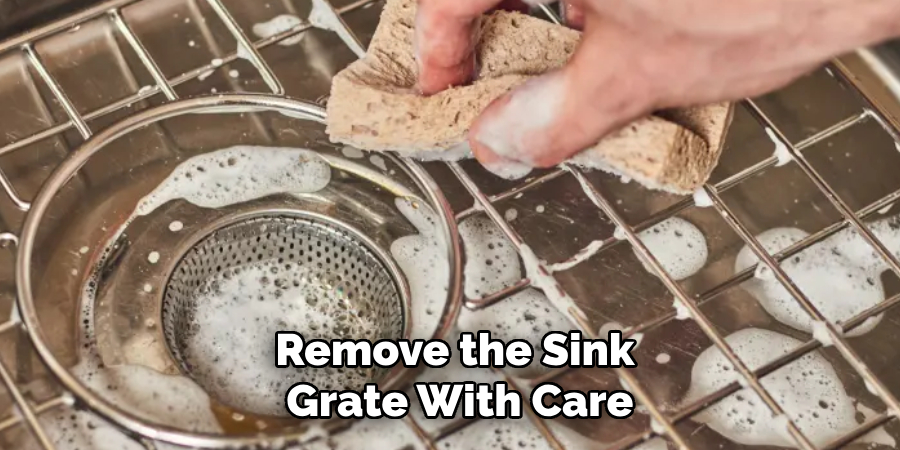
Inspecting for Tough Stains or Rust
Carefully examine the grate’s surface for any tough stains or localized rust formation. Determining the nature of these blemishes early on allows you to choose the most suitable cleaning strategy, whether it calls for applying a baking soda paste, vinegar soak, or a specialized rust remover. This step ensures an efficient cleaning process tailored to each specific issue.
How to Clean Sink Grate: Cleaning Methods
Mild Soap and Water
Begin the cleaning process gently yet effectively by mixing warm water with a few drops of dish soap. This solution is ideal for regular maintenance and handling minor stains. Immerse a soft sponge or brush into this soapy water, then scrub the sink grate thoroughly, ensuring you reach every corner to remove dirt and oils. Pay particular attention to the joints and any residual buildup in grooves.
After scrubbing, rinse the grate thoroughly under warm water to eradicate all soap residue completely, preventing any potential film or dull appearance.
Vinegar and Baking Soda for Tough Stains
Vinegar and baking soda are excellent allies for tackling stubborn stains. Create a baking soda paste by combining water and baking soda until you attain a thick consistency, or opt for a vinegar soak by immersing the grate in a vinegar solution. Both methods assist in effectively breaking down grime and stains. Apply the paste or soak the grate, allowing the solution to sit for several minutes.
Then, gently scrub the area using a non-abrasive brush, ensuring you do not scratch or damage the grate surface. This method is particularly effective for dealing with minor rust and hard water stains.
Rust Removal (if applicable)
If rust is present, more specialized attention is required. You can either apply a commercial rust remover or concoct a paste using baking soda and fresh lemon juice, which are recognized for their mild acidity and rust-dissolving properties. Apply the paste directly to the rust spots and let it sit for a few minutes before scrubbing the affected areas with a soft brush.
Be sure to scrub gently and carefully to avoid damaging the grate’s surface. For persistent rust, repeat as necessary, always rinsing thoroughly and drying the grate completely afterward to prevent future rusting.
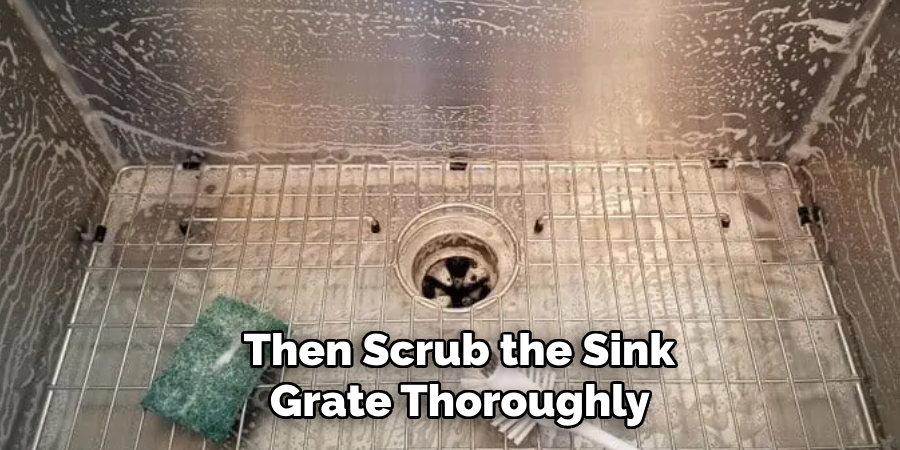
Drying and Polishing the Sink Grate
After the cleaning process, it’s essential to dry the sink grate thoroughly to prevent the formation of water spots or rust on its surface. Use a clean, absorbent towel to dab away excess moisture, especially on corners and joints where water could linger. For stainless steel grates, a microfiber cloth is highly effective for polishing, helping to restore their original shine and luster.
Working in gentle circular motions can buff out minor surface imperfections and leave the metal gleaming. As an optional step, consider applying a thin layer of mineral oil to the stainless steel grate. This not only enhances the shine but also offers a protective barrier against moisture and fingerprints. The oil should be distributed evenly with a soft cloth, ensuring that all parts of the grate are covered. Properly drying and polishing the grate will maintain its appearance and functional longevity.
Maintaining a Clean Sink Grate
Regular Cleaning Routine
A consistent cleaning routine is crucial to maintaining the luster and functionality of your sink grate. Begin by wiping down the grate daily using a damp cloth to prevent the accumulation of food particles and grime. This simple step requires minimal effort but significantly reduces the need for intensive cleaning sessions. For more thorough cleaning, schedule a deep cleaning weekly or as signs of buildup appear.
Utilize mild cleaning solutions and non-abrasive tools to maintain the integrity of the material, ensuring the grate remains in optimal condition.
Preventing Water Spots and Stains
Water spots and stains can become problematic, particularly for stainless steel grates. To avoid these unwanted marks, thoroughly dry the grate after each use. Employ soft cloths or paper towels to absorb residual moisture, focusing on joints and edges where water tends to linger. For enhanced protection against spots, consider using soft water or appropriate drying agents designed for stainless steel. These measures help preserve the grate’s visual appeal and prolong its lifespan.
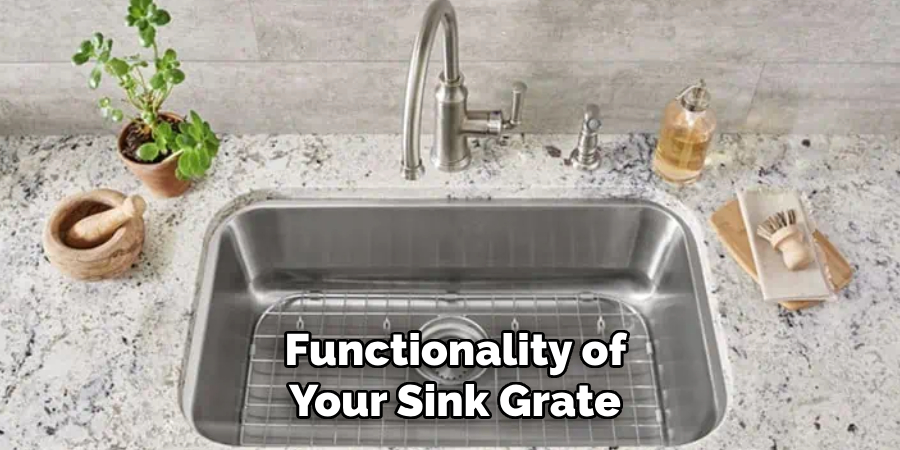
Avoiding Damage
To ensure longevity and prevent damage, refrain from using harsh chemicals or abrasive pads that could scratch or corrode the surface. Pay special attention to plastic or coated metal grates; inspect regularly for any signs of cracks or coating wear. If any damage is detected, address it promptly to prevent further deterioration. By following these preventive measures, your sink grate will remain a reliable and attractive fixture in your kitchen space.
Common Mistakes to Avoid
Maintaining your sink grate’s functionality and appearance requires careful attention to common cleaning pitfalls. One significant mistake is using abrasive cleaners or steel wool, which can scratch and damage the grate’s surface, particularly for stainless steel or coated versions. Over time, these scratches can harbor bacteria and reduce the grate’s aesthetic appeal.
Another error is ignoring buildup, leading to discoloration and unpleasant odors. Regular cleaning is essential to prevent food particles and grime from accumulating. Submerging coated grates in strong cleaning agents for extended periods is also detrimental. These harsh substances can strip away coatings, leading to peeling or further damage.
Instead, use gentle, appropriate cleaning solutions and methods to ensure the grate remains pristine. By avoiding these common mistakes and adhering to a consistent maintenance routine, you can extend the lifespan and functionality of your sink grate.
Frequently Asked Questions
1. How Often Should I Clean My Sink Grate?
For optimal maintenance, it’s advised to conduct a light cleaning daily using a damp cloth to prevent grime buildup. Additionally, a more thorough deep cleaning should be performed weekly or whenever signs of residue appear, using mild and non-abrasive cleaning solutions.
2. Can I Use Any Household Cleaner on My Sink Grate?
Not all household cleaners are suitable. Avoid abrasive cleaners or those containing harsh chemicals, as these can damage the finish, particularly on stainless steel or coated grates. Instead, opt for gentle, non-abrasive cleaning agents specifically designed for kitchen surfaces.
3. What Should I Do if I Notice Rust on My Sink Grate?
If you observe rust on your sink grate, address it promptly using a baking soda and lemon juice paste or a commercial rust remover. Apply the solution to the rusted areas and gently scrub with a soft brush to avoid abrasive actions that could harm the surface.
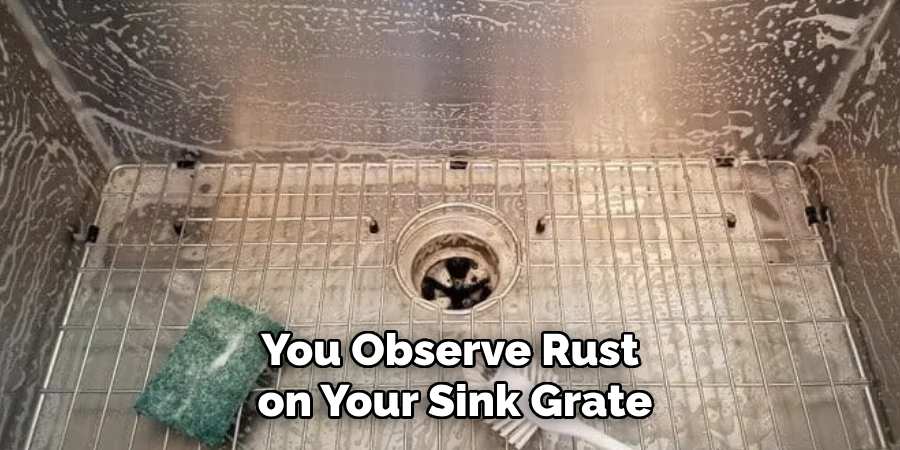
Conclusion
In conclusion, understanding “how to clean sink grate” effectively involves following a series of specific steps. Begin by washing the grate with warm, soapy water, utilizing vinegar and baking soda for tougher stains. Address any rust issues carefully with appropriate treatments. Ensure thorough drying and optional polishing to maintain a brilliant shine.
Implement a regular cleaning routine to prevent grime build-up and water stains, enhancing both longevity and hygiene. Use gentler, non-abrasive cleaning products and methods to preserve the grate’s condition. Adhering to these practices can prolong your sink grate’s lifespan and maintain a sparkling sink area.
